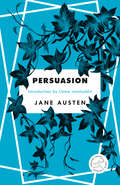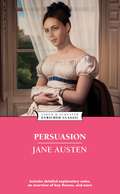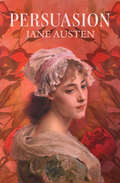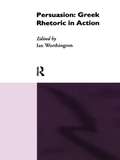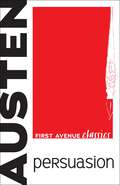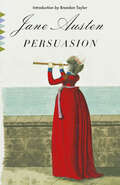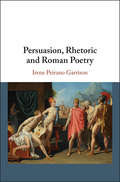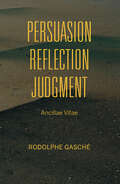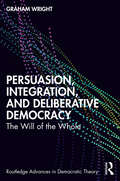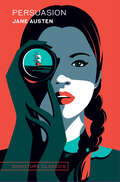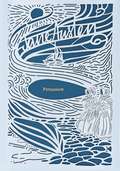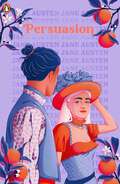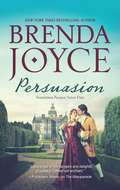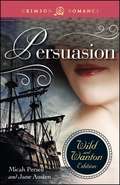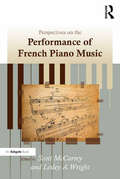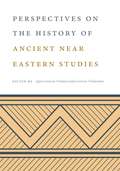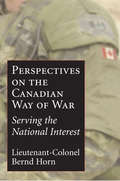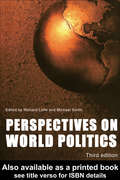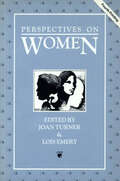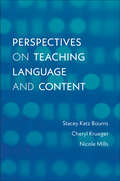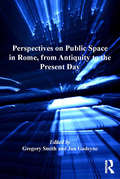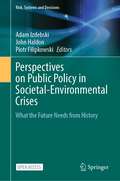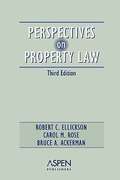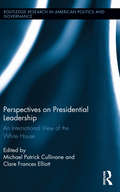- Table View
- List View
Persuasion: Novela... (Modern Library Torchbearers)
by Jane AustenJane Austen&’s last completed novel, a brilliantly insightful story of regret, second chances, and the courage to follow our hearts Anne Elliot is twenty-seven and unmarried—by all accounts a spinster in her time—seemingly doomed to spend the rest of her life waiting on her image-obsessed father and extravagant older sister; attempting to maintain their once lavish, now dwindling family estate; and occasionally babysitting the children of her married younger sister. It wasn&’t always this way, though. When Anne was nineteen, she was in love with and engaged to Frederick Wentworth, a man with no money and few prospects. Anne&’s well-meaning family and friends convinced her that a young heiress like herself could do better, so she broke off the engagement. But when chance brings Wentworth and Anne together again eight years later, he is now an accomplished naval captain with an impressive fortune, and Anne must face her feelings for him that remain and consider how different her life could have been if only she hadn&’t been so easily persuaded by others.
Persuasion: Novela... (Enriched Classics)
by Jane AustenThe Enriched Classics series offers readers such features as:* A concise introduction that gives the reader important background information* A chronology of the author's life and work* A timeline of significant events that provides the book's historical context* An outline of key themes and plot points to help guide the reader's own interpretations* Detailed explanatory notes* Critical analysis, including contemporary and modern perspectives on the work* Discussion questions to promote lively classroom and book group interaction* A list of recommended related books and films to broaden the reader's experience* Reader-friendly font size
Persuasion: Novela...
by Jane AustenNow a Netflix film and a selection of the TikTok Book Club—Jane Austen&’s classic novel about a second chance at love in nineteenth-century England. Anne Elliot is a perfect catch. Born to a landed family, she&’s observant and intelligent. When Anne came of age, she accepted a proposal from the ambitious officer Frederick Wentworth. Unfortunately, Wentworth&’s modest means made him a poor choice for the Elliot family, and Anne was persuaded to call off the engagement. One refused marriage and nearly a decade later, Anne has not forgotten about Wentworth. Little does she know that her fortune is about to change. When the Elliots make ill-advised investments and lose their money, they are forced to rent out their ancestral home and move to Bath. There, Anne once again meets Wentworth, who is now a captain, in what could be her second and final chance at love and marriage. Buttressed by the author&’s humane characterization and sharp social commentary, Persuasion is a must-read for any Austen fan. This ebook has been professionally proofread to ensure accuracy and readability on all devices.
Persuasion: Greek Rhetoric In Action
by Ian WorthingtonGreek rhetoric, in its diverse forms and impact on its contemporary context, is central to an understanding of ancient culture. The influence and exploitation of rhetoric in ancient times and modern reactions to it are the focus of this book. In recent years there has been a renaissance in the study of Greek rhetoric and oratory, informed by modern political sociology and discourse analysis. This book, bringing together the work of leading scholars in the field, examines the relation of ancient oratory and rhetoric to a variety of historical contexts and literary genres at both the theoritical and practical levels, at the same time reflecting new trends and ideas now at work
Persuasion: And Persuasion; V. 2 (First Avenue Classics ™)
by Jane AustenAnne Elliot was once engaged to Captain Frederick Wentworth, but she broke off the engagement when a family friend persuaded her that it was an imprudent match. Several years later, Captain Wentworth returns from the Napoleonic Wars, but his seeming indifference towards Anne convinces her that it is too late to win him back. Meanwhile, the charming Mr. Elliot—Anne's cousin and her father's heir to Kellynch Hall—plots to marry her to ensure he remains the sole heir to the family estate. Will Captain Wentworth rediscover his feelings for Anne, or will she be forced to marry the scheming Mr. Elliot? English author Jane Austen wrote this novel of manners in 1816, one year before her death at the age of 41. This unabridged version of her last completed novel is taken from the 1818 copyright edition.
Persuasion: A Novel (Vintage Classics)
by Jane AustenOf all Jane Austen&’s great and delightful novels, Persuasion—the story of a second chance at true love—is widely regarded as the most moving. Anne Elliot, daughter of the snobbish Sir Walter Elliot, is woman of quiet charm and deep feelings. When she was nineteen she fell in love with—and was engaged to—a naval officer, the fearless and headstrong Captain Wentworth. But the young man had no fortune, and Anne allowed herself to be persuaded to give him up. Now, eight years later, Wentworth has returned to the neighborhood, a rich man and still unwed. Anne&’s never-diminished love is muffled by her pride, and he seems cold and unforgiving. What happens as the two are thrown together in the social world of Bath—and as an eager new suitor appears for Anne—is touchingly and wittily told in Persuasion, a masterpiece that is also one of the most entrancing novels in the English language.
Persuasion, Rhetoric and Roman Poetry
by Irene Peirano GarrisonPrevious studies on the relationship between rhetorical theory and Roman poetry have generally taken the form of lists enumerating elements of style and arrangement that poets are said to have 'borrowed' from rhetorical critics. This book examines, and ultimately questions, this entrenched theoretical model and the very notion of rhetorical influence on which this paradigm is built. Tracing key moments in the poetic and the rhetorical traditions, in the context of which the problematic relationship of difference and similarity between rhetorical and poetic discourse is discussed, the book focuses on the cultural relevance of this intellectual divide in Roman literary culture. The study of rhetorical sources, such as Cicero, Seneca the Elder and Quintilian, and of select responses in Roman poetry, sheds light on long-standing scholarly assumptions about classical poetry as artless language and about the role of rhetoric in the construction of the decline of post-classical cultures.
Persuasion, Reflection, Judgment: Ancillae Vitae (Studies in Continental Thought)
by Rodolphe GaschéGasché expounds on Aristotle, Heidegger, and Arendt in “a major interpretative achievement that underscores what is at stake in political thought” (Notre Dame Philosophical Reviews).As one of the most respected voices of Continental philosophy today, Rodolphe Gasché pulls together Aristotle’s conception of rhetoric, Martin Heidegger’s debate with theory, and Hannah Arendt’s conception of judgment in a single work on the centrality of these themes as fundamental to human flourishing in public and political life. Gasché’s readings address the distinctively human space of the public square and the actions that occur there, and his valorization of persuasion, reflection, and judgment reveals new insight into how the philosophical tradition distinguishes thinking from other faculties of the human mind.“Here Rodolphe Gasche is at his best: rigorous, scholarly, creative, forceful, laser focused on the issues at stake, learned, thoughtful, and original. He demands much of his readers, but reading his work is rewarding in ways that can be profoundly affecting.” —Dennis J. Schmidt, author of Between Word and Image“Rodolphe Gasche has long been one of the most meticulous readers of texts on the philosophical scene and here he once again offers a master class in how to do philosophy through interpretation.” —Robert Bernasconi, author of How to Read Sartre
Persuasion, Integration, and Deliberative Democracy: The Will of the Whole (Routledge Advances in Democratic Theory)
by Graham WrightIt is easy to be in favor of a government that reflects the will of people you like. It is more difficult to be in favor of a government that reflects the will of people you hate. But this is precisely what democracy requires of us. And one of the most serious threats facing democracy today, in the United States and around the world, is the discomfort that many citizens feel toward this core democratic principle: that even those citizens we think of as evil, deluded, or simply wrong should still be allowed a say in what their own government does.Perhaps the best hope of resolving this tension can be found in the idea of deliberative democracy, which sees a particular form of non-coercive dialogue as an essential component of democratic governance. But in this book, Graham Wright argues that the traditional approach to deliberation through persuasion faces serious challenges that may limit its potential in exactly the situations where the threats to democracy are greatest. Instead, he argues that an alternative method of deliberation based on the process of “integration,” as described by the early 20th-century philosopher Mary Parker Follett, can do a better job of navigating these challenges, and can help us make democratic decisions that better reflect the will of the whole people.Persuasion, Integration, and Deliberative Democracy: The Will of the Whole is a fresh approach to debates about the challenges of democracy, and the value of democratic deliberation. For anyone wanting to understand the dangers facing deeply divided societies, this is an essential read.
Persuasion (Signature Editions)
by Jane AustenEight years ago, Anne Elliot followed the advice of Lady Russell, her only true friend, and broke off her engagement to the dashing young naval officer Frederick Wentworth. When Anne and the newly wealthy Captain Wentworth cross paths years later, it is clear that he has neither forgotten—nor forgiven—their past. Can true love survive heartbreak? Who should we listen to in matters of the heart? Filled with Jane Austen&’s trademark wit and social commentary, Persuasion is a delightful romance and a surprisingly subversive exploration of our need to persuade, and to be persuaded by, others.
Persuasion (Seasons Series)
by Jane AustenA fine exclusive edition of one of literature’s most beloved stories with full page call-outs with quotes from summer. “He had seen you indeed, before he came to Bath, and admired you, but without knowing it was you. So says my historian, at least. Is this true? Did he see you last summer or autumn, &‘somewhere down in the west,&’ to use her own words, without knowing it to be you?&”At twenty-seven, Anne Elliot is no longer considered young enough for worthy romantic prospects. Eight years earlier, she had been persuaded by her friend Lady Russell to break off her engagement to Frederick Wentworth, a handsome naval captain with neither fortune nor rank. What transpires when they encounter each other again is movingly told in Jane Austen's last completed novel. A brilliant satire of vanity and pretension, Persuasion is, above all, a love story tinged with the heartache of missed opportunities. Persuasion (Seasons Edition--Summer) is one of four titles available in June 2020. The summer season will include Jane Eyre, the Adventures of Huckleberry Finn, and The Wonderland Collection.
Persuasion (First Impressions)
by Jane AustenWith a foreword by Alexis Hall, author of Boyfriend Material and A Lady for a DukeAnne and Captain Wentworth fell in love eight years ago. Although Anne broke off their engagement as her father wished, their flame flickers on, however dim.When they finally meet again, Wentworth has secured wealth and status to become an eligible option. But both Anne and Wentworth have their eyes on other people, and Anne must follow her heart to decide whether to start again or rekindle an old flame.Fall head over heels for First Impressions, Penguin's boldly designed new Jane Austen collection for young-adult readers featuring the complete and unabridged texts. Full of meet-cutes, missed connections and drama, this eye-catching six-book series is an open invitation to embrace your inner romantic
Persuasion
by Brenda JoyceAmelia Greystone was deeply in love when the Earl of St. Just abruptly ended his courtship and left Cornwall ten years earlier. So she is stunned when Simon returns, recently widowed. Now she must forget the past they shared and his betrayal and console him as any neighbor would. Simon has changed-he is dark and haunted now-but he can still make her reel with a single look. When he offers her the position of housekeeper, Amelia knows she must refuse. But for the sake of his children, she throws all caution to the wind....A British spy, Simon Grenville is now playing both sides in a time of war, his goal to keep his sons safe. Yet when he is brought face-to-face with the woman he once loved, he realizes nothing about his feelings for Amelia has changed-if anything, they are even stronger. Still, Simon knows he must stay away from Amelia; his life is too dangerous now. But sometimes passion is too strong to be denied....
Persuasion
by Jane Austen Micah PersellPersuasion, Jane Austen's final published work, is a story of second chances. A very young Frederick Wentworth and Anne Elliot are broken-hearted when their hasty engagement is dissolved due to Frederick's lack of prestige and lack of money. Eight years later, they are still healing when they are thrust into the same social circle once more - however, in a brilliant turn, now Frederick is Captain Wentworth, a prosperous naval officer, and the Elliot family finds themselves on the brink of financial ruin.Austen, who suffered her own broken engagement, pens a beautiful tale of the redeeming power of love, and the passion between Frederick and Anne sizzles on the page, even by the standards of 1816. In this wild and wanton edition of Persuasion, read the entire classic and discover the steamy untold portions of Austen's story that have been lying dormant in the subtext. Who knows, Austen may have included these bits herself 200 years ago - if only she dared.Sensuality Level: Sensual
Perspectives on the Performance of French Piano Music
by Lesley A. WrightPerspectives on the Performance of French Piano Music offers a range of approaches central to the performance of French piano music of the nineteenth and twentieth centuries. The contributors include scholars and active performers who see performance not as an independent activity but as a practice enriched by a wealth of historical and analytical approaches. To underline the usefulness of contextual understanding for performance, each author highlights the choices performers must confront with examples drawn from particular repertoires and composers. Topics explored include editorial practice, the use of early recordings, emergent disciplines such as analysis-and-performance, and traditions passed down from teacher to student. Themes that emerge demonstrate the importance of editions as a form of communication, the challenges of notation, the significance of detail and of deeper continuity, the importance of performing and teaching traditions, and the influence of cross disciplinary frameworks. A link to a set of performed examples on the frenchpianomusic.com website allows readers to hear and compare performances and interpretations of the music discussed. The volume will appeal to musicologists and analysts interested in performance, performers, students, and piano teachers.
Perspectives on the History of Ancient Near Eastern Studies
by Agnès Garcia-Ventura Lorenzo VerderameThe present volume collects eighteen essays exploring the history of ancient Near Eastern studies. Combining diverse approaches—synthetic and analytic, diachronic and transnational—this collection offers critical reflections on the who, why, and how of this cluster of fields. How have political contexts determined the conduct of research? How do academic agendas reflect larger social, economic, and cultural interests? How have schools of thought and intellectual traditions configured, and sometimes predetermined, the study of the ancient Near East? Contributions treating research during the Nazi and fascist periods examine the interpenetration of academic work with politics, while contributions dealing with specific national contexts disclose fresh perspectives on individual scholars as well as the conditions and institutions in which they worked. Particular attention is given to scholarship in countries such as Turkey, Portugal, Iran, China, and Spain, which have hitherto been marginal to historiographic accounts of ancient Near Eastern studies.
Perspectives on the History of Ancient Near Eastern Studies
by Agnès Garcia-Ventura Lorenzo VerderameThe present volume collects eighteen essays exploring the history of ancient Near Eastern studies. Combining diverse approaches—synthetic and analytic, diachronic and transnational—this collection offers critical reflections on the who, why, and how of this cluster of fields. How have political contexts determined the conduct of research? How do academic agendas reflect larger social, economic, and cultural interests? How have schools of thought and intellectual traditions configured, and sometimes predetermined, the study of the ancient Near East? Contributions treating research during the Nazi and fascist periods examine the interpenetration of academic work with politics, while contributions dealing with specific national contexts disclose fresh perspectives on individual scholars as well as the conditions and institutions in which they worked. Particular attention is given to scholarship in countries such as Turkey, Portugal, Iran, China, and Spain, which have hitherto been marginal to historiographic accounts of ancient Near Eastern studies.In addition to the editors, the contributors are Selim Ferru Adali, Silvia Alaura, Isabel Almeida, Petr Charvát, Parsa Daneshmand, Eva von Dassow, Hakan Erol, Sebastian Fink, Jakob Flygare, Pietro Giammellaro, Carlos Gonçalves, Katrien de Graef, Steven W. Holloway, Ahmed Fatima Kzzo, Changyu Liu, Patrick Maxime Michel, Emanuel Pfoh, Jitka Sýkorová, Luděk Vacín, and Jordi Vidal.
Perspectives on the Canadian Way of War: Serving the National Interest
by Colonel Bernd HornContrary to popular opinion, this nation has always consciously and consistently utilized military force to further its security, as well as its economic and political well-being. Despite the best of intentions to aid others, the reality is that military force has most often been used to serve the national interest in ways that were not always altruistic but rather to serve practical political purpose. In the final analysis, the Canadian military experience has been integral to creating the advanced, affluent, and vibrant nation that exists today. This collection of essays, written by such noted historians and authors as Douglas Delaney, Stephen J. Harris, Ronald Haycock, Michael Hennessy, Bernd Horn, and Sean Maloney, spans the entirety of the Canadian military experience and underlines the reality that the government has consistently used its armed forces to achieve political purpose. More often than not, the "Canadian way of war" has been a direct reflection of circumstance and political will.
Perspectives on World Politics
by Michael Smith Richard LittlePerspectives on World Politics has been essential reading for students of international relations since the 1980s. This new edition fully updates this key text for the twenty-first century. Focusing on the main competing analytical perspectives, the first and second editions established an authoritative sense of the conceptual tools used to study world politics, as well as reflecting on the major debates and responses to changes in the world arena. This third edition builds on the success of its predecessors by presenting a fresh set of readings within this framework: power and security interdependence and globalization dominance and resistance. It also includes a much-expanded fourth section, ‘World Politics in Perspective’, which reflects the methodological and normative debates that have developed since publication of the previous edition. This is an essential text for all students and scholars of politics and international relations.
Perspectives on Women in the 1980s
by Joan Turner Lois EmeryWe are now fifteen years into the second wave of feminism, and public opinion polls show majority support for all the basic issues raised by the women’s movement. This collection of articles focuses on strategies and directions for the movement that will enable all women to benefit from changing attitudes in the 1980s.
Perspectives on Teaching Language and Content
by Stacey Katz Bourns Cheryl Krueger Nicole MillsAn overview of current issues and developments in foreign language education, designed for instructors of language, literature, and culture at any stage of their careers A contemporary guide to language teaching, this book presents the latest developments and issues in the field of applied linguistics. Written by scholars with expertise in theoretical linguistics, literary and cultural studies, and education, the book encourages readers to examine their beliefs about language teaching and to compare these perspectives with the tenets of current research-supported frameworks and approaches. It also leads instructors to make vital connections between theory and practice while linking language and content pedagogy so that they may develop innovative lesson plans, classroom activities, and course materials that align with the specific contexts in which they teach. Serving as a textbook for teaching methods courses, as well as a reference for instructors with varying levels of experience and diverse specializations, the book is applicable to all levels of instruction and provides guidelines and models that prepare instructors to teach in a rapidly evolving field.
Perspectives on Public Space in Rome, from Antiquity to the Present Day
by Jan GadeyneThis volume provides readers interested in urban history with a collection of essays on the evolution of public space in that paradigmatic western city which is Rome. Scholars specialized in different historical periods contributed chapters, in order to find common themes which weave their way through one of the most complex urban histories of western civilization. Divided into five chronological sections (Antiquity, Middle Ages, Renaissance, Baroque, Modern and Contemporary) the volume opens with the issue of how public space was defined in classical Roman law and how ancient city managers organized the maintenance of these spaces, before moving on to explore how this legacy was redefined and reinterpreted during the Middle Ages. The third group of essays examines how the imposition of papal order on feuding families during the Renaissance helped introduce a new urban plan which could satisfy both functional and symbolic needs. The fourth section shows how modern Rome continued to express strong interest in the control and management of public space, the definition of which was necessarily selective in this vastly extensive city. The collection ends with an essay on the contemporary debate for revitalizing Rome's eastern periphery. Through this long-term chronological approach the volume offers a truly unique insight into the urban development of one of Europe’s most important cities, and concludes with a discuss of the challenges public space faces today after having served for so many centuries as a driving force in urban history.
Perspectives on Public Policy in Societal-Environmental Crises: What the Future Needs from History (Risk, Systems and Decisions)
by John Haldon Adam Izdebski Piotr FilipkowskiThis is an open access book. Histories we tell never emerge in a vacuum, and history as an academic discipline that studies the past is highly sensitive to the concerns of the present and the heated debates that can divide entire societies. But does the study of the past also have something to teach us about the future? Can history help us in coping with the planetary crisis we are now facing? By analyzing historical societies as complex adaptive systems, we contribute to contemporary thinking about societal-environmental interactions in policy and planning and consider how environmental and climatic changes, whether sudden high impact events or more subtle gradual changes, impacted human responses in the past. We ask how societal perceptions of such changes affect behavioral patterns and explanatory rationalities in premodernity, and whether a better historical understanding of these relationships can inform our response to contemporary problems of similar nature and magnitude, such as adapting to climate change.
Perspectives on Property Law (3rd edition)
by Robert C. Ellickson Carol M. Rose Bruce A. AckermanThis reader continues its track record of success of combining fascinating and essential readings and materials pertaining to property law with author commentary. Traits the authors continue to build upon: class copy medium essays and articles articulate important points related to the major issues in property law, that are accompanied by introductory text, notes, and questions to deepen students' understanding of the ideas contained in the well-known and respected author team article regarding commons and the over-patenting of the human genome, Pipes' article on how the lack of private property contributed to the decline of the Soviet Union, Desoto's article on titling in developing nations, and more.
Perspectives on Presidential Leadership: An International View of the White House (Routledge Research in American Politics and Governance)
by Michael Patrick Cullinane Clare Frances ElliottIn 2011 Barack Obama invited ten distinguished biographers to the White House to ask them one question: which past American president should I emulate? This was not the first time Obama asked scholars this, but the answer he received would differ as presidential legacies waxed and waned. In 2008 Obama chose Lincoln; in 2009, Reagan; and in 2010, Theodore Roosevelt. Perspectives on Presidential Leadership is an examination of presidential legacy, and in particular an analysis of the first ever UK ranking of American presidents which took place in 2011. In thirteen chapters, thirteen individual presidential administrations are assessed. Some presidents have been considered a success, others a failure; both types are featured in these thirteen case studies in a measured attempt to understand how the perception of presidential leadership evolves, shifts, and contorts across three centuries of American politics. The case studies also derive from the expertise of the collected British, Irish and Canadian authors, all of whom are leading scholars in their fields, and many of which took part in the 2011 survey. At a time when understanding presidential legacy is in high demand, this book offers a unique international perspective. Through extended commentary and inter-disciplinary study of the UK perspective it provides groundbreaking research.
